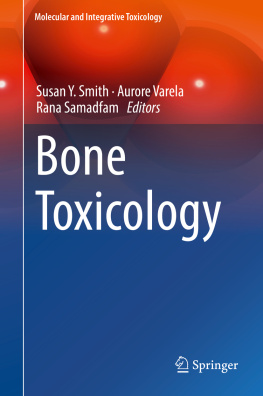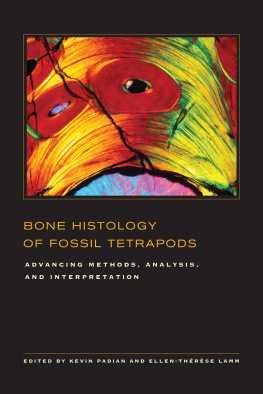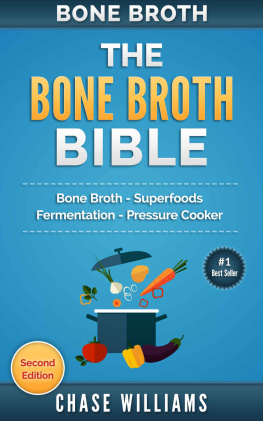Springer International Publishing AG 2017
Susan Y. Smith , Aurore Varela and Rana Samadfam (eds.) Bone Toxicology Molecular and Integrative Toxicology
1. Introduction and Considerations in Bone Toxicology
Abstract
This chapter is intended to provide the researcher with information to facilitate in the design, execution, and interpretation of studies with bone end-points. The ability to use our knowledge of bone biology to ensure study conditions are optimal to detect an effect will be presented. This includes study design considerations and the utility of other models to explore the impact new compounds may have on the skeleton in the development of safe and effective drugs.
1.1 Introduction
Bone end-points can be included in any safety study design, for any species, at any age, irrespective of duration and route of administration. Additional mechanistic studies can also be designed on a case-by-case basis to meet regulatory demands. The ability to use our knowledge of bone biology to ensure study conditions are optimal to detect an effect is key to a successful outcome. This includes study design considerations, the utility of animal models (chemically, genetically, or surgically modified) in a safety assessment setting, and the potential benefit of including in vitro studies and studies using nonmammalian species (such as zebra fish). These studies cannot only provide invaluable mechanistic data but also respect the three Rs initiative and the ethical use of animals.
This chapter will also tackle the issue of skeletal adversity. One of the most difficult aspects of interpreting the relevance of a skeletal effect is to understand what constitutes a direct effect on bone and what might be considered secondary to effects on growth and body weight. This is a considerable challenge in therapeutic areas such as diabetes and obesity, for example, where the intended pharmacological outcome is likely to impact body weight in non-diseased animals. Animal health and welfare is always the primary concern and of relevance in studies which may become confounded by exaggerated pharmacological effects. Therefore, strategies for mitigating effects of exaggerated pharmacology are important considerations in study design.
The term bone quality has many definitions and is often used as a black box when unknown factors affect bone strength, which is a product of both bone quantity and bone quality. Bone quality encompasses all the geometric and material factors that contribute to fracture resistance (Donnelly ). End-points used to assess skeletal integrity therefore need to characterize the bone geometry and microarchitecture, assess the mechanical properties, and evaluate its tissue composition. No single method can address all aspects of bone quality, but a combination of techniques can help to provide a comprehensive evaluation. The toolbox available in a preclinical setting can be extensive; therefore, the methods used to assess bone should be tailored to the study design and the outcome measures of interest.
1.2 Regulatory Considerations
The primary outcome measures used preclinically to identify and characterize the bone quality are biochemical markers, radiography/bone densitometry, histopathology/histomorphometry, and biomechanics. The selection of these end-points has largely been driven by the requirements or guidelines issued by the regulatory agencies to test drugs intended to treat or prevent osteoporosis (osteoporosis testing guidelines : Japanese MHLW (Skeletal Imaging).
To date, qualitative histopathology remains the gold standard for diagnostic pathology and hazard identification in the safety assessment of potential new therapeutics, but it is not sensitive to evaluate changes in bone mass, geometry, and density. For diagnostic terminology used to describe bone changes, the reader is referred to the INHAND initiative publication devoted to skeletal tissues and teeth of laboratory rats and mice (Fossey et al..
Table 1.1
Recommendations for bone retention in toxicology studiesa
Bone | Potential use | Storage |
|---|
Rodent/non-rodent |
Tibia, proximal | Histomorphometry/micro-CT | NBF then alcohol |
Lumbar vertebrae L2 (NHP), L3 | Histomorphometry | NBF then alcohol |
Lumbar vertebrae L4, L5b | Biomechanics | Frozen 20 C |
Femur, whole | Biomechanics | Frozen 20 C |
NBF 10% neutral buffered formalin, NHP nonhuman primate
a Minimum recommendations in addition to standard regulatory requirements; additional backup bones can be added
b L4 + L5 (together) for mice
1.3 Tier Approach to Including Specialized Bone End-Points in Preclinical Toxicology Studies
The decision to include specialized bone end-points into toxicity studies is driven by numerous factors. These specialized techniques when used as part of a systems approach to safety assessments are normally sufficiently sensitive to detect perturbations in bone which are needed to address liability, to monitor drug pharmacology, determine the chronology of an effect, address a regulatory requirement, or provide mechanistic data to characterize an effect. In instances where markers show changes consistent with the expected pharmacology of a compound, blood sampling for pharmacokinetics can be combined with sampling for biochemical markers to establish a pharmacokinetic/pharmacodynamic (PK/PD) profile (e.g., see Ominsky et al. ). This PK/PD profiling can help guide selection of a specific marker for use in future studies and potentially to establish the optimal timing for sample collection.
Safety assessments ultimately need to provide information regarding how a drug is affecting the skeleton and whether this is a beneficial or adverse effect. When testing a compound belonging to a specific drug class with known class effects, these end-points can be used to confirm the class effect and to further characterize the drug for equivalence, superiority, or adversity. When testing a new drug with no established toxicity, based on what is known of the target or mechanism of action, standard clinical pathology parameters from acute and/or early dose-range finding studies can be monitored for perturbations in calcium/phosphorus and total alkaline phosphatase levels, as a minimum. Biochemical markers can be added to the clinical pathology analysis to facilitate hazard identification. These early data are used to drive the design of the sub-chronic and chronic studies. In studies 28 days or longer, radiography and/or bone densitometry can be added, either in vivo or ex vivo using excised bones. Radiographs are used to monitor skeletal growth (most notably in juvenile toxicology studies), assess skeletal maturity (growth plate closure), identify and/or monitor the progression of abnormalities and bone healing, and as a tool in skeletal phenotyping. Radiography has become an important end-point in rodent lifetime pharmacology or carcinogenicity studies where there is a risk for osteosarcoma; whole body radiographs obtained prior to termination are used to identify bone masses and lesions to facilitate tissue collection at necropsy and subsequent microscopic evaluation and diagnosis (Jolette et al. ). In vivo bone densitometry is highly recommended for non-rodent species where group sizes are small (typically 35/sex) and bone density can vary considerably between animals. Inclusion of baseline scans for large animals allows any changes to be determined relative to individual animal baseline data. Baseline scans are normally not required for rodent studies which typically are well powered ( n = 8 to 10/sex) and have relatively homogeneous bone density within a population. For rodent studies, adequate data for interpretation can often be obtained ex vivo. For rodent and non-rodent studies 3 months or longer, in vivo scans can be acquired at several timepoints during the study to provide a chronology of any effects.





